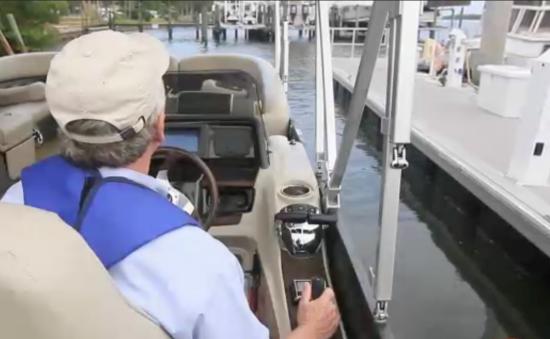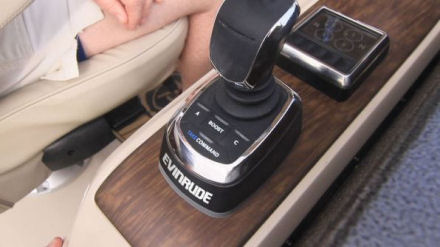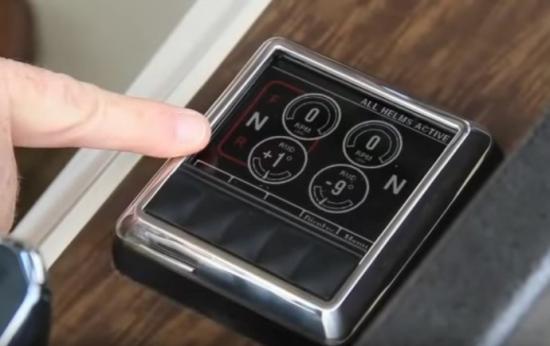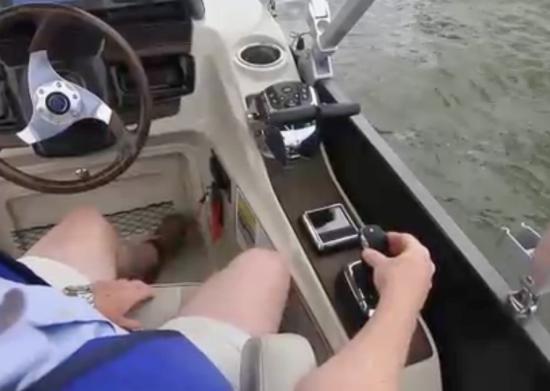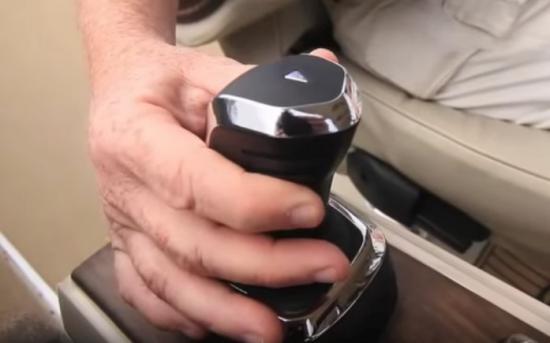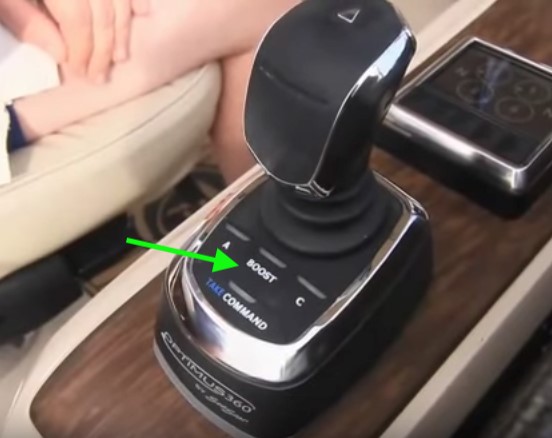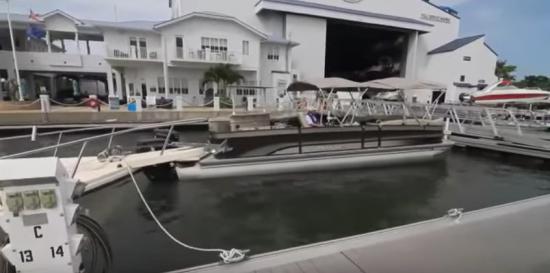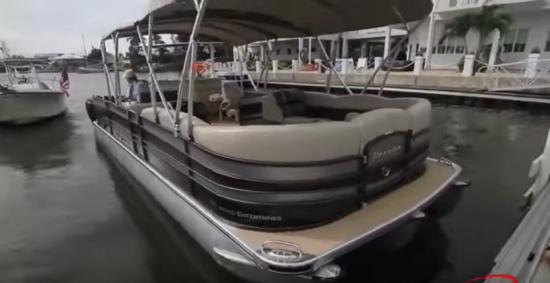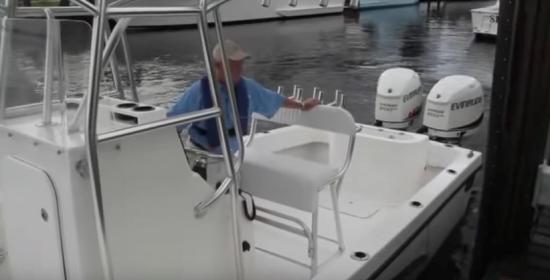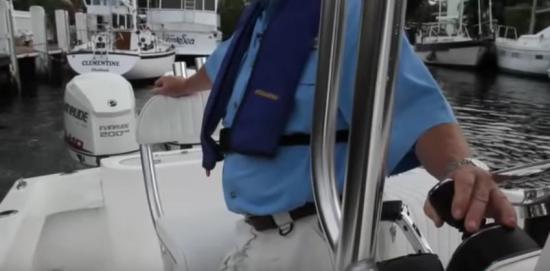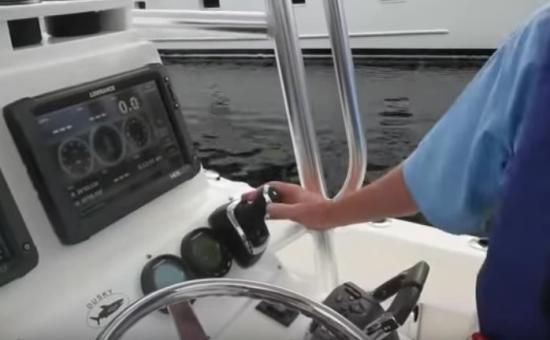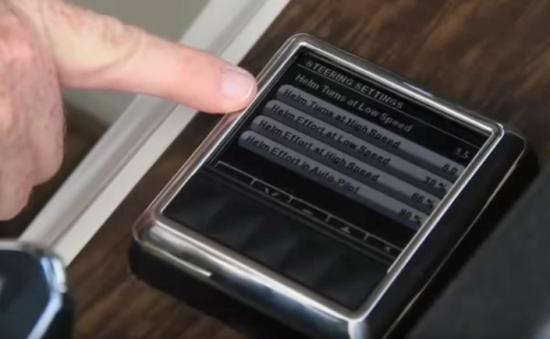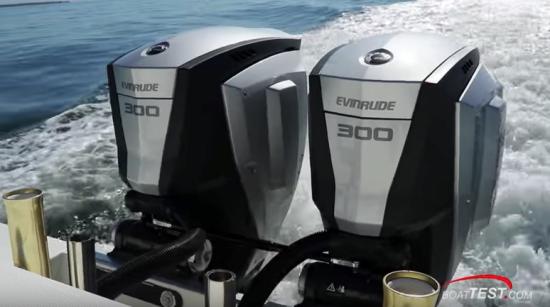Brief Summary
Evinrude's iDock system provides joystick maneuverability on any twin engine installation with Evinrude E-TEC G2 150-hp to 300-hp outboards.
Key Features
- Connects with existing internal hydraulic steering feature of Evinrude E-TEC G2 engines
- 360 Degrees of Maneuverability
- Aircraft Gyroscope
- Two-Stage Joystick
Specifications
| Type of Engine | |
|---|---|
| Number of Cylinders | |
| Horse Power | 400 |
| Configuration | |
| Weight | |
| Fuel Type | Gasoline |
| Fuel Delivery | |
| Shaft Length Options | |
| Shift Throttle Control | |
| Displacement | |
| Steering Control | |
| Recommended Fuel | |
| Alternator Output | |
| CARB Rating | |
| Engine Monitoring System |
Captain's Report
Evinrude iDock System Review
The iDock Joystick piloting system from Evinrude offers joystick control on boats with twin, triple, or quad installations of Evinrude E-TEC outboards ranging from 150 to 300 horsepower. To put the iDock system to the test, we looked at this system on two separate installations, a large pontoon boat and a center console, both with twin installations.
Pontoon Propulsion
First, we tested iDock on a large, triple-tube, luxury pontoon boat. Let’s review the components and how they’re installed. The joystick is the hub of the system and it has a contoured handle that’s spring-loaded and always returns to the neutral position when released. While the joystick can be placed virtually anywhere, it seems to be mounted in this installation to give a commanding view of the side of the boat for side-to docking.
A Take Command button activates the joystick. There’s a Boost button to give more control in heavy wind or current. (The A and C buttons on the base on either side of the boost button are used only for original system setup.)
The CANtrak display gives system status in a very easy-to-understand visual at a glance. On the display in a handy graphical numerical format, we can see what gear both engines are in, the current steering angle, and the engine rpm, and we can see how all of this changes in real time as we manipulate the joystick.
The other components to this system are the steering pumps. These will control each engine individually, at least in a twin-engine installation. Triples and quads will work a little differently.
Hands-On Operation
Activating the system was straightforward. The user simply pushed the “take command” button at the bottom of the joystick and began maneuvering. If the engine controls aren’t in neutral then a blinking light tells the user that the system is not activated. Move the levers to neutral and press Take Command again. To deactivate the system and return the control to the throttle and shift levers, press the “plus” button on the speed controls located on the center of the binnacle, and then drive normally.
To maneuver the boat, simply move the joystick in the direction you want the boat to go, forward, back, to the sides or anywhere in between. Rotating the joystick also rotates the boat and of course adds directional corrections when wind and tide may change as necessary.
We moved the joystick gently to the side and the boat followed the command. We also noticed that with no wind or current there is no wandering of the bow. That makes sense, since the iDock system is dialed into each boat upon installation. Once away from the dock we can move the stick forward to throttle the boat forward, and even steer with it. Docking was just as simple. When we moved the stick towards the dock and she slid right over. Once again we can pull away and drive away even around the corner, all with the joystick.
Proportional Power
Speed in the maneuvers is progressive, the amount of thrust applied is proportional to how far the joystick is moved. Move the stick a little, and a small amount of power is applied. Move it further and more power is applied. If we need even more power to overcome wind or current conditions, we can simply add to the effectiveness by pressing the Boost button.
Testing a Wide Range of Commands
Rotating the boat is as easy as twisting the joystick. We can spin it into position and then again lay alongside. Now let’s try maneuvering into a slip. On our test of the system, we drove over to a slip using only the joystick. As we approached we had a little bit of a crosswind blowing so we used the steering capability of the stick to keep us lined up as we headed into the slip bow first. We then decided to put this system to the test with a much tighter spot to see how we did. And as before, we can pull the boat away, rotate in position and pull out. It’s actually impressive how accurate this system is.
Center Console Installation
For another test, we had an offshore tournament fishing boat and right away we noticed the engines: They’re first-generation E-TECs. The installation has the same digital throttle and shift system, and we’ve got the display showing the status of the system. The joystick has been repositioned on the upper panel.
When the bow started to drift out of position to the left, I just added a little right twist to the sideways motion of the stick and it all straightened out. The system has the same precision and the same capabilities we saw with the pontoon boat.
To position the boat to approach the dock from the other side, we rotated the joystick, and that’s when we became aware of a characteristic that the center console presents that the pontoon boat did not show us. Our test captain had been working the joystick with his left hand, his preferred hand. And with the different docking situation, he was able to switch hands and use his right hand to approach the dock to port. More to the point, he found it just as intuitive to use one hand as he did the other. Both are seemingly just as easy and natural, and this is from a left-handed captain! As for driving in and out of this narrow canal we found it seemed more comfortable to use the joystick than to switch over to traditional controls. That’s definitely something that we weren’t expecting.
We also found a cool feature that we don’t see on other joystick systems: The user can go into the menu settings and steering, and change the parameters of the steering including the number of turns it takes to move the wheel lock to lock at low and high speed, the helm effort at low and high speed, and the helm effort on autopilot.
The system will activate in whatever mode it was left in. If the user was using boost mode when the system was turned off, the system will restart in that mode. But to reset the system to the slower mode, the user just has to press boost again, and the system will return to the slower mode. This system provides ease of maneuverability that makes handling different boats in difficult situations well within reach of even novice boaters.
Two things really impressed us about the iDock system, aside from the ease of maneuverability. First, we liked that it controls the steering as well so the user can use it to fine-tune the steering adjustments. The second attribute: iDock is available when repowering—it’s not just for new installations.
